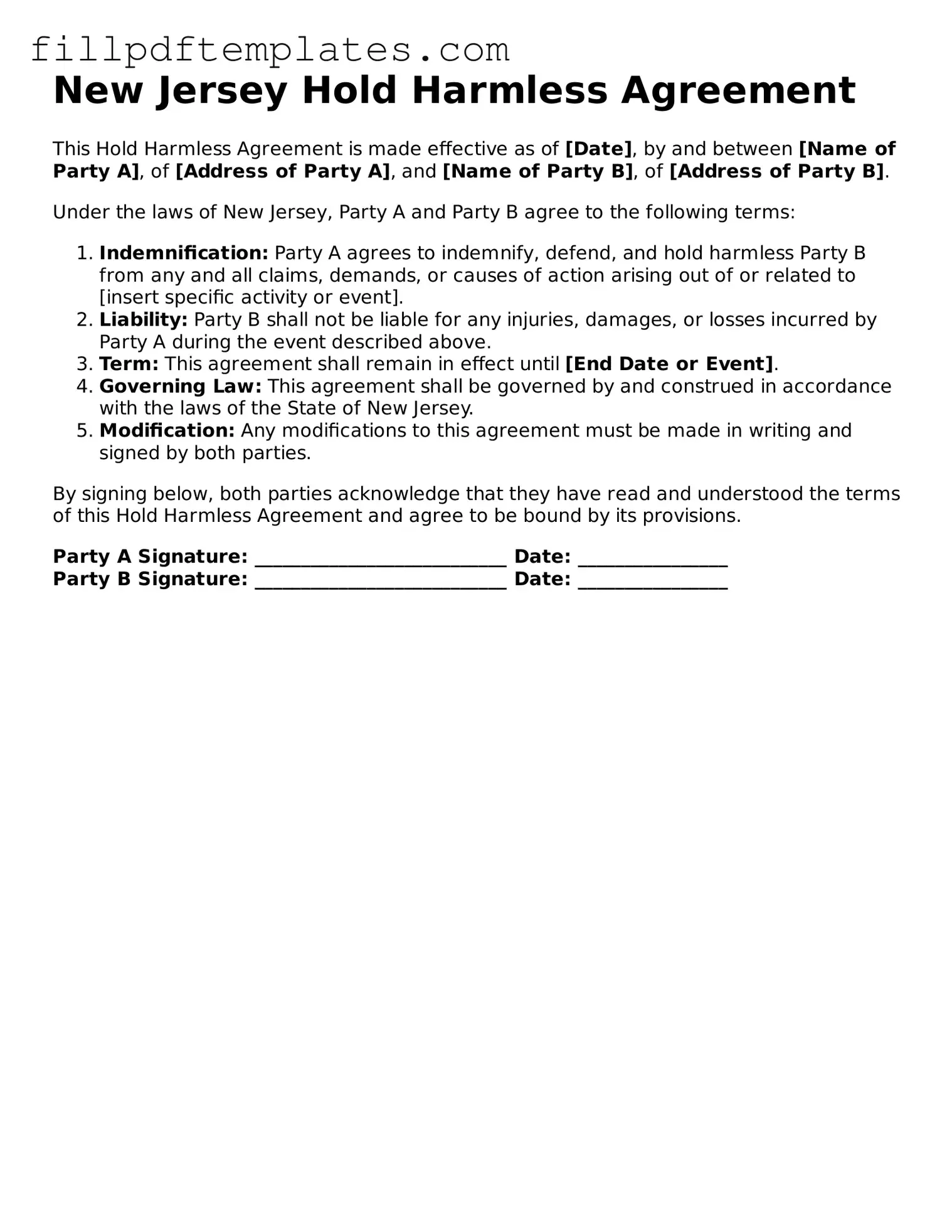New Jersey Hold Harmless Agreement
This Hold Harmless Agreement is made effective as of [Date], by and between [Name of Party A], of [Address of Party A], and [Name of Party B], of [Address of Party B].
Under the laws of New Jersey, Party A and Party B agree to the following terms:
- Indemnification: Party A agrees to indemnify, defend, and hold harmless Party B from any and all claims, demands, or causes of action arising out of or related to [insert specific activity or event].
- Liability: Party B shall not be liable for any injuries, damages, or losses incurred by Party A during the event described above.
- Term: This agreement shall remain in effect until [End Date or Event].
- Governing Law: This agreement shall be governed by and construed in accordance with the laws of the State of New Jersey.
- Modification: Any modifications to this agreement must be made in writing and signed by both parties.
By signing below, both parties acknowledge that they have read and understood the terms of this Hold Harmless Agreement and agree to be bound by its provisions.
Party A Signature: ___________________________ Date: ________________
Party B Signature: ___________________________ Date: ________________
